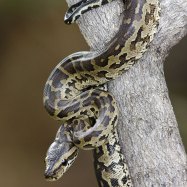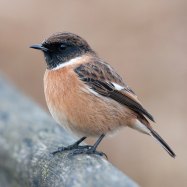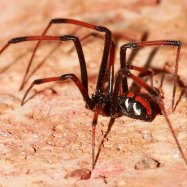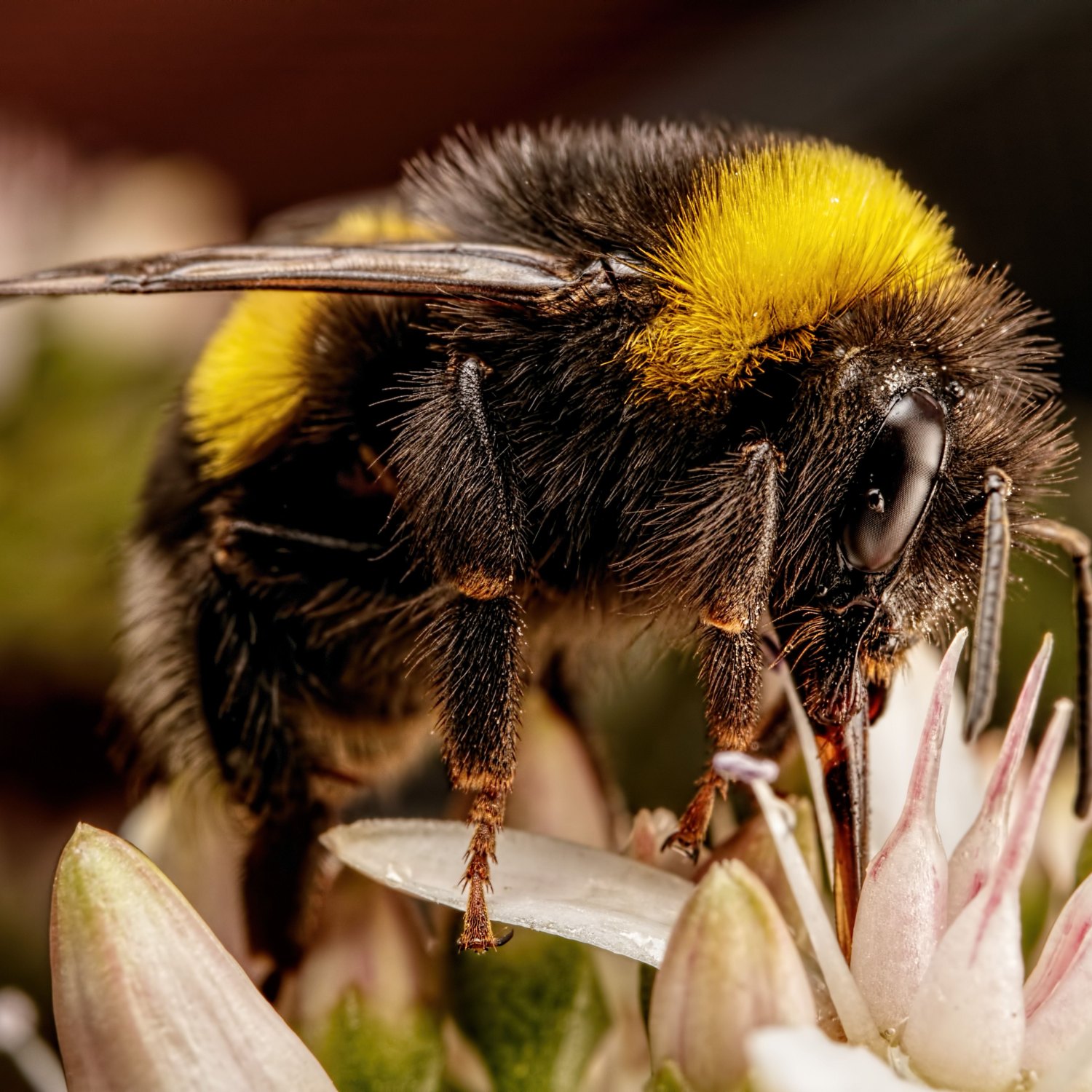
Bumblebee
0.4 to 1.2 inches
Bumblebees, also known as flying teddy bears, are a type of bee belonging to the Apidae family. These insects can be found all over the world, with sizes ranging from 0.4 to 1.2 inches. Their round and furry bodies make them stand out among other pollinators. They play an important role in our ecosystems by pollinating plants and producing delicious honey. Next time you see a bumblebee, appreciate their important role in our environment.
Animal Details Summary:
Common Name: Bumblebee
Kingdom: Animalia
Habitat: Grasslands, meadows, woodlands, gardens
The Buzz About Bumblebees: Nature's Hardy Pollinators
Bumblebees are one of nature's most important and fascinating creatures. With their distinctive round and furry bodies, marked with vibrant black and yellow stripes, they are a familiar sight in gardens, meadows, and fields all around the world. As a member of the Apidae family, they are closely related to honeybees but have distinct characteristics that set them apart. In this article, we will delve into the intriguing world of bumblebees, exploring their physical features, behaviors, and ecological importance Bumblebee.Classification and Habitat
Bumblebees belong to the scientific genus Bombus, from the Latin word for buzzing. They are part of the larger Kingdom Animalia and Phylum Arthropoda, which includes all animals with segmented bodies and jointed legs. Within the class Insecta, bumblebees are classified under the order Hymenoptera, which also includes sawflies, wasps, and ants.Bumblebees can be found in a variety of habitats, including grasslands, meadows, woodlands, and gardens. They have a wide geographical distribution, with different species adapted to various environments and climates. While some species thrive in tropical regions, others can be found in the temperate zones of the northern hemisphere. Some bumblebees have even been spotted in colder parts of the world, such as the Arctic Circle. In terms of country of origin, bumblebees have a widespread distribution, and it is impossible to determine a specific location as their birthplace.
Appearance and Behavior
The most striking feature of bumblebees is their black and yellow coloration, which serves as a warning signal to potential predators Blue Whale. This color scheme is known as aposematic, and it indicates that the bee carries toxins to defend itself against predators. Interestingly, some bumblebees have evolved to mimic the appearance of other insects, such as carpenter bees or paper wasps, in order to confuse predators and increase their chances of survival.In terms of body shape, bumblebees are round and furry, with short, stocky legs designed for heavy lifting. They have large heads with compound eyes that enable them to have a 360-degree view of their surroundings. Bumblebees also have long, straw-like tongues called proboscis, which they use to extract nectar from flowers. Unlike the tube-like tongue of honeybees, the proboscis of bumblebees is flattened, allowing them to lap up nectar like a spoon.
Bumblebees are social insects, living in colonies that are usually smaller than those of honeybees. A bumblebee colony is made up of a queen, male drones, and female workers. The queen is the largest bumblebee in the colony and is responsible for reproducing. In contrast, male drones' primary role is to mate with the queen, and female workers are responsible for all other tasks, such as gathering food, building nests, and caring for the young. Bumblebee workers are also able to manipulate the temperature inside the colony by flapping their wings to generate heat or fanning to cool it down.
Feeding Habits
Bumblebees play a vital role in the ecosystem as pollinators. Despite their small size, they are surprisingly efficient pollinators, as their furry bodies carry large amounts of pollen from flower to flower. This is because bumblebees vibrate their bodies at high frequencies, known as buzz pollination, to release pollen from the anthers of flowers. This unique trait makes them effective pollinators for some plants whose pollen is difficult to access.Bumblebees feed primarily on nectar and pollen collected from flowers. Nectar provides them with the energy they need to fly and carry out their activities, while pollen is their source of protein. Interestingly, bumblebees have evolved to be generalist feeders, meaning they can collect nectar and pollen from a wide variety of flowers, making them crucial pollinators for many plant species.
Threats and Conservation Efforts
Like many other pollinators, bumblebees are facing numerous threats, including habitat loss, climate change, pesticide use, and diseases from parasites. The decline in bumblebee populations has significant implications for our ecosystem, as they play a crucial role in pollinating crops, wildflowers, and other plants on which many animals depend.To combat these threats, conservationists have been working to protect bumblebees and their habitats. One of the most crucial conservation efforts is establishing and maintaining diverse habitats, rich in a variety of flowering plants, to provide bumblebees with food sources throughout the year. Another approach is to reduce pesticide use, especially those that are toxic to bees. Additionally, researchers are looking into developing more sustainable and organic farming practices that do not harm bumblebees and other pollinators.
NLP and Bumblebees
The study of bumblebees has captivated scientists and researchers for centuries, and with advancements in technology, there is even more to uncover about these fascinating insects. Natural Language Processing (NLP) is a branch of artificial intelligence used to analyze, understand, and generate human language. NLP has been instrumental in improving our understanding of the complex communication systems of bumblebees and how they use different signals to communicate with each other, like pheromones, vibrations, and dances.An example of NLP in bumblebee research is a study conducted by researchers at the University of Bristol, where they used NLP to analyze bumblebee vibrations, which they believe is a form of communication between nestmates. The researchers were able to decipher the meaning of different buzzes and interpret them as either food-related, nest-related, or danger-related.
Conclusion
In conclusion, bumblebees are stunning and incredibly significant creatures that deserve our attention and protection. As pollinators, they play a crucial role in maintaining the delicate balance of our ecosystem. With their unique physical features, fascinating behaviors, and reliance on diverse habitats, bumblebees embody the wonder and complexity of nature. As we continue to learn more about these insects, let us also make a conscious effort to help preserve their habitats and ensure their survival for generations to come.

Bumblebee
Animal Details Bumblebee - Scientific Name: Bombus
- Category: Animals B
- Scientific Name: Bombus
- Common Name: Bumblebee
- Kingdom: Animalia
- Phylum: Arthropoda
- Class: Insecta
- Order: Hymenoptera
- Family: Apidae
- Habitat: Grasslands, meadows, woodlands, gardens
- Feeding Method: Nectar and pollen
- Geographical Distribution: Worldwide
- Country of Origin: Not applicable
- Location: Varies depending on species
- Animal Coloration: Black and yellow
- Body Shape: Round and furry
- Length: 0.4 to 1.2 inches
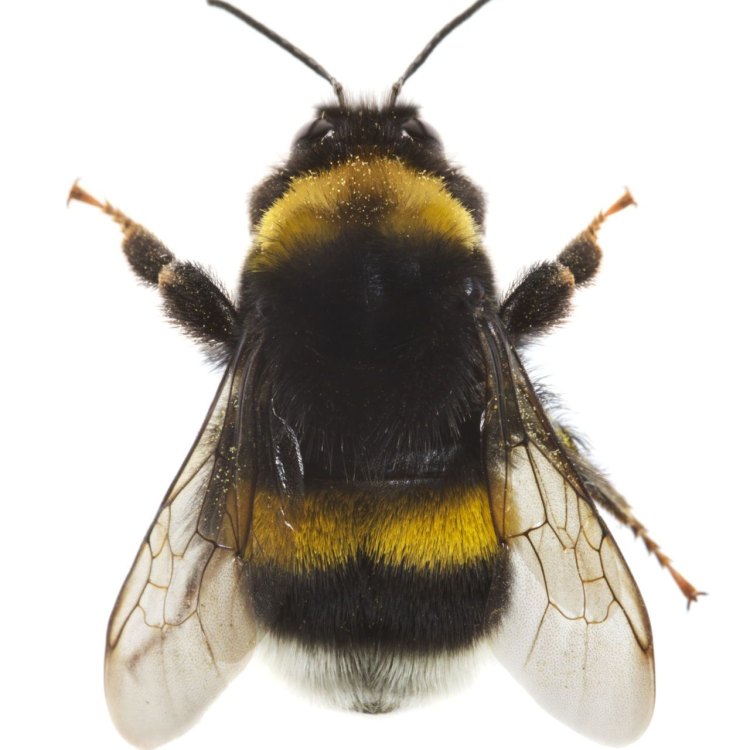
Bumblebee
- Adult Size: Medium
- Average Lifespan: 1 to 2 months
- Reproduction: Sexual
- Reproductive Behavior: Queen mates with males and reproduces
- Sound or Call: Buzzing
- Migration Pattern: Some species migrate, others stay in the same area
- Social Groups: Colonies
- Behavior: Social insects, important pollinators
- Threats: Habitat loss, pesticides, climate change
- Conservation Status: Varies depending on species
- Impact on Ecosystem: Important pollinators for plants
- Human Use: Beekeeping, honey production
- Distinctive Features: Furry body, large size compared to other bees
- Interesting Facts: Bumblebees are capable of flying higher than any other bee species
- Predator: Birds, spiders, insects
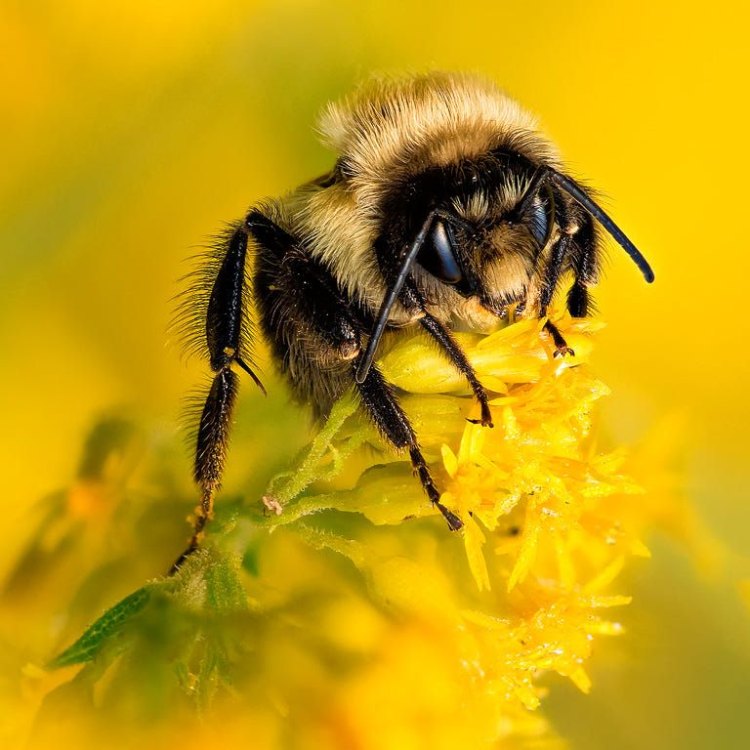
Bombus
The Buzzing World of Bumblebees: Nature's Furry Workers
Bumblebees, with their distinctive black and yellow stripes and loud buzzing sound, are a common sight in gardens and fields. These fascinating creatures belong to the genus Bombus, and there are over 250 species found worldwide. Despite their small size, bumblebees play a crucial role in the ecosystem and have a unique set of features and behaviors that make them stand out from other bees.The Basics: Adult Size and Average Lifespan
Compared to other bee species, bumblebees are considered to be medium-sized PeaceOfAnimals.Com. On average, they can grow to be between 0.4 to 1 inch in length, with a wingspan of around 0.8 inches. But the most impressive feature of bumblebees is their large size in proportion to other bees. They are much larger and more robust, with a furry body that makes them look cuddly and cute.However, bumblebees have a relatively short lifespan compared to other insect species. On average, they live for 1 to 2 months, with the queens having a longer lifespan of up to 1 year. This means that bumblebees have to work hard during their short lives to ensure the survival of their colonies.
Reproduction: Queen Mating and Reproductive Behavior
Like other bee species, bumblebees reproduce sexually Brown Headed Cowbird. The queen bee is responsible for mating with the male bees, also known as drones. This usually takes place during the spring and summer months, but the exact timing varies depending on the species and location.After mating, the queen bee stores the sperm in her body and uses it to fertilize her eggs throughout her life. She then builds a nest, usually underground, and lays her eggs, which hatch into larvae within a few days. The larvae are fed by the queen and develop into adult bees over time. The queen's sole purpose is to reproduce and keep the colony thriving.
The Buzzing Sound: A Distinctive Feature
One of the most distinctive features of bumblebees is their loud buzzing sound. This buzzing comes from the rapid beating of their wings, which can reach up to 130 times per second. This beating creates a distinctive tone that is not only a characteristic of bumblebees but also serves as a way for them to communicate with each other.The buzzing sound can also be used to determine the gender of a bumblebee. Male bees produce a higher-pitched buzzing sound than females, which is used to attract female bees during mating.
Social Life: Colonies and Social Insects
Bumblebees are social insects, which means they live together in colonies. These colonies can range from a few dozen bees to a few hundred, depending on the species. The queen bee is the leader of the colony, and her sole purpose is to reproduce and ensure the survival of the colony.Female worker bees, who are smaller in size than the queen, are responsible for collecting food and maintaining the nest. They also take care of the queen bee and her young. Male bees, on the other hand, are only present during the mating season and have no role in the colony.
Within the colony, bumblebees have a well-defined social hierarchy. The queen is at the top, followed by the female workers, and finally, the male bees. They have a complex system of communication, which involves pheromones, body language, and, of course, buzzing sounds.
Moving On: Migration Patterns
When it comes to migration, bumblebees have different patterns depending on the species. Some species of bumblebees migrate, while others stay in the same area all year round. Those that migrate do so in response to changing weather conditions or the availability of flowers for food.Migratory bumblebees travel significant distances, sometimes up to thousands of kilometers, to find suitable environments for foraging and nesting. This ability to move and adapt to different environments is crucial for their survival and helps maintain genetic diversity within the species.
Buzzing Pollinators: Importance in the Ecosystem
Bumblebees are vital pollinators, responsible for pollinating a wide variety of plants, including fruits and vegetables. As they move from flower to flower in search of nectar, they also collect pollen on their bodies, making them essential in the reproduction of many plants.Without pollinators like bumblebees, plants would not be able to produce fruits and seeds, which would lead to a decline in plant diversity and ultimately affect the entire ecosystem. Bumblebees play a crucial role in the pollination of crops, making them essential in agriculture and food production.
Threats to Bumblebees and Their Conservation Status
Like many other insect species, bumblebees face numerous threats to their survival. The most significant threats include habitat loss, the use of pesticides, and climate change.Habitat loss is a result of human activities such as urbanization, agriculture, and deforestation. This leads to a decrease in the availability of suitable nesting sites and a decline in the number of flowers for foraging. The use of pesticides, specifically neonicotinoids, has also been linked to the decline of bumblebee populations.
Climate change also poses a significant threat to bumblebees. The change in weather patterns and rising temperatures affects the availability of flowers, which affects their food supply. Bumblebees are also susceptible to diseases and parasites, and climate change weakens their immune systems, making them more vulnerable to these threats.
The conservation status of bumblebees varies depending on the species, with some being listed as endangered or critically endangered. Efforts are being made to protect and conserve bumblebees, such as creating bee-friendly habitats and reducing the use of pesticides. However, more needs to be done to ensure the survival of these important pollinators.
Human Use: Beekeeping and Honey Production
Humans have been interacting with bumblebees for centuries, mainly through the practice of beekeeping. Beekeepers provide artificial nests for bumblebees and take care of them to ensure healthy and productive colonies. These colonies are then used for pollination in agriculture, as well as for honey production.Bumblebees are also used in greenhouse pollination, where they are introduced to help pollinate crops such as tomatoes and peppers. Their large size and ability to buzz pollinate make them effective pollinators for these crops.
Distinctive Features and Interesting Facts
Bumblebees have several distinctive features, making them stand out from other bee species. One of the most noticeable features is their furry body, which is used for insulation and also makes them look adorable. They also have a unique color pattern, with black and yellow stripes, which serves as a warning to predators.Interestingly, bumblebees are capable of flying higher than any other bee species. They have been recorded flying at altitudes of up to 3,000 meters, making them the highest-flying insects in the world.
Predators and Defense Mechanisms
Bumblebees are under constant threat from predators, including birds, spiders, and other insects. To protect themselves, bumblebees have several defense mechanisms, such as their distinctive buzzing sound, which serves to scare away predators. They also have stingers that are mainly used to defend the nest and queen, but rarely used for defense.The Fascinating World of Bumblebees
In conclusion, bumblebees are fascinating creatures with unique features and behaviors that make them integral to the ecosystem. They are not only important pollinators, but they also have an essential role in maintaining plant diversity and food production. As these furry workers face increasing threats, it is crucial for humans to take action to protect and conserve these vital members of our ecosystem. So the next time you hear the loud buzzing of a bumblebee, take a moment to appreciate their significance and admire their hard work in nature's buzzing world.
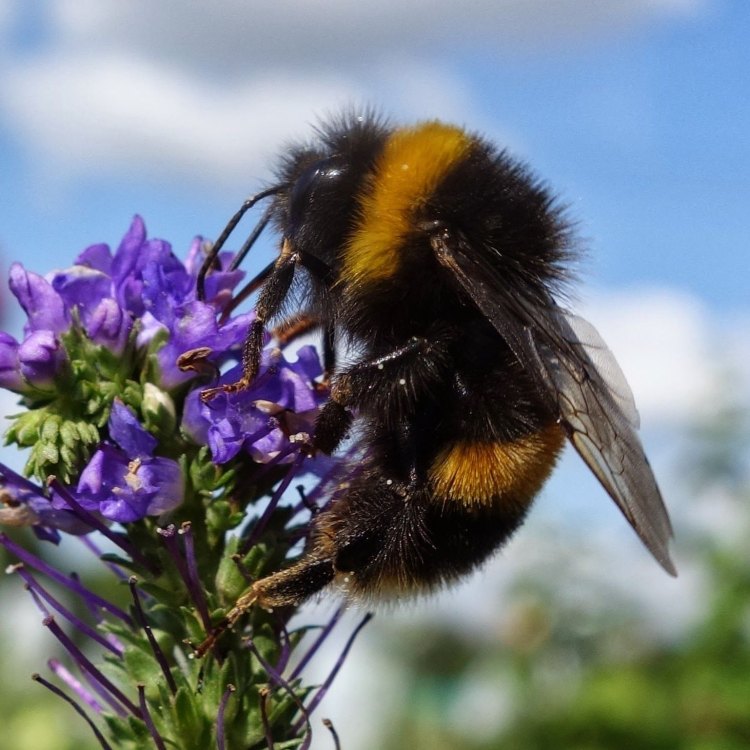
The Buzz About Bumblebees: Nature's Hardy Pollinators
Disclaimer: The content provided is for informational purposes only. We cannot guarantee the accuracy of the information on this page 100%. All information provided here may change without prior notice.

